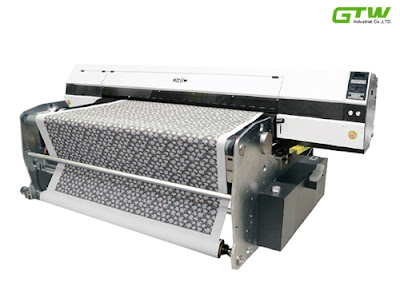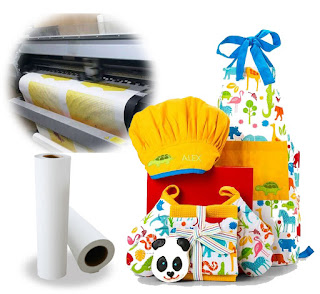Transfer Printing or Direct Sublimation Printing, Which One is Better?
With the development of digital printing, there are many kinds of printing methods in the market. Many people who want to start their sublimation printing business usually ask me a question: what is the difference between direct printing and transfer printing? Do you know the answer?
For years, printing via a transfer medium has been the standard dye-sub method.However, the direct dye-sublimation, which can print directly onto a fabric without requiring a transfer sheet has been developed recently . Many people think direct printing can help us save money on transfer paper. Is that so? Well, things aren’t that simple. We can analyze from these aspects:
1. The image quality
The big benefit of using a transfer process is image quality.With transfer paper, during sublimation, the ink doesn’t penetrate far into the substrate, remaining close to the surface. In contrast, direct disperse penetrates further into the fabric, which—much like inkjet printing on plain paper—means that fine detail is lost and colors become less vivid.
2. The applications
Another advantage of using a transfer process is that you can work with any kind of surface with a polyester coating: banners, mugs, flip-flops, you name it. But the applications of direct printing are limited.
3. Counterintuitively
Counterintuitively is also the advantage of transfer process, perhaps—it makes color management easier. In dye-sub printing, color profiles primarily focus on the transfer paper, not the final substrate.
4. The costs
The number one benefit of direct printing is the cost savings of not having to use a transfer paper. Direct sublimation inks are about the same cost as transfer-based inks, but you are often putting down more ink when using direct disperse, so depending on what you’re printing it may be a wash cost-wise. But generally, there are can be cost savings.
5. The specific applications
For direct sublimation printing, it does have advantages for specific applications, especially soft signage, flags, and banners. The primary advantage of direct disperse for these applications is deep penetration of the sublimation ink into, and saturation of, the fabric. You do lose sharpness compared to transfer, but since signage and banners are viewed from a distance, so they may not need to be sharp.
Both varieties of dye-sub have their advantages and their disadvantages, and if you’re new to the technology, or are looking to invest in a dye-sub system, it pays to understand the benefits and limitations of each.
More information:
Website: www.ink-sublimation.com
E-mail: sales@ink-sublimation.com
Whatspp: +86 18105155024
*************************************************
Follow us:








评论
发表评论